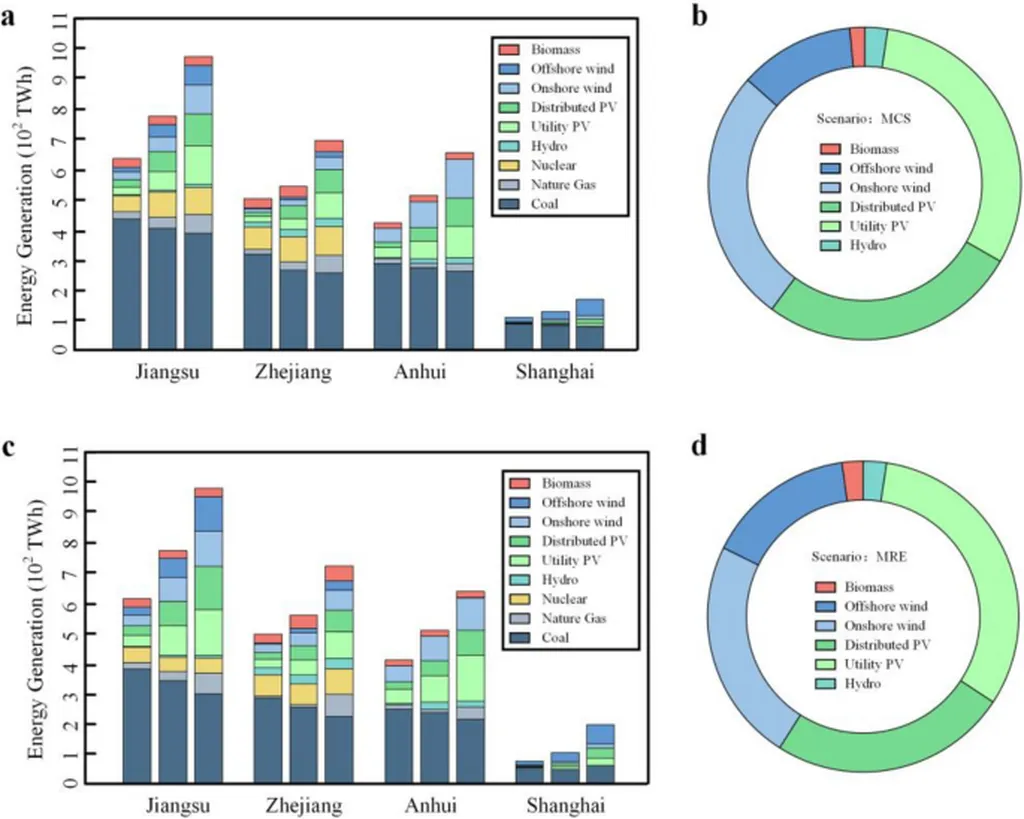In the heart of China’s Zhejiang Province, a groundbreaking study led by Huang Xiaohong of the Xinchang Water Resources and Hydropower Bureau is set to revolutionize how we understand and utilize cemented sand and gravel (CSG) materials under cyclic loading conditions. This research, published in the esteemed journal *Science and Engineering of Composite Materials* (or, in English, *Science and Engineering of Composite Materials*), promises to reshape the energy sector by providing a more accurate and efficient way to model the behavior of CSG materials in real-world applications.
The study delves into the mechanical response of CSG specimens subjected to triaxial cyclic loading-unloading tests, with varying cementitious contents ranging from 20 to 100 kg/m³. Huang Xiaohong and her team observed that as the cementitious content increased, the hysteresis loops in both the stress-strain and volumetric strain-axial strain spaces evolved from near-elliptical to crescent-shaped. This evolution reflects a progressive reduction in energy dissipation, a critical factor in the longevity and efficiency of structures built with these materials.
“Understanding the behavior of CSG materials under cyclic loading is crucial for the energy sector,” Huang Xiaohong explained. “Our findings provide a more accurate model that can be used to design and analyze structures subjected to repeated loading and unloading cycles, such as those found in hydropower projects and other energy infrastructure.”
The research team formulated the tangent modulus as a function of the volumetric stress ratio during loading, while the nearly linear unloading-reloading paths enabled the use of their slopes to represent this ratio directly. Within the generalized plasticity framework, these findings yielded explicit expressions for the loading direction, shear-dilation relationship, and plastic modulus valid for both loading and unloading stages.
One of the most significant outcomes of this study is the construction of a twelve-parameter elastoplastic constitutive model. This model treats each stage as a coupled elastic-plastic process without invoking an explicit yield surface. Parameters were calibrated against the cyclic test data obtained at multiple amplitudes, ensuring high fidelity in numerical simulations.
“The model’s capability to capture the unloading-reloading characteristics of CSG underscores its applicability to engineering analyses involving cyclic loading,” Huang Xiaohong added. “This can lead to more robust and efficient designs, ultimately reducing costs and improving the safety and performance of energy infrastructure.”
The implications of this research are far-reaching. By providing a more accurate and efficient way to model the behavior of CSG materials, this study can help engineers and designers optimize the use of these materials in various applications, from hydropower projects to other energy infrastructure. This can lead to more sustainable and cost-effective solutions, benefiting both the environment and the bottom line.
As the energy sector continues to evolve, the need for accurate and reliable models of material behavior becomes increasingly important. Huang Xiaohong’s research represents a significant step forward in this regard, offering a powerful tool for engineers and designers to better understand and utilize CSG materials in their projects.
In the words of Huang Xiaohong, “This research is not just about understanding the behavior of CSG materials; it’s about unlocking their full potential to create a more sustainable and efficient energy future.” With its publication in *Science and Engineering of Composite Materials*, this study is poised to make a significant impact on the field, shaping future developments and paving the way for more innovative and effective solutions in the energy sector.

